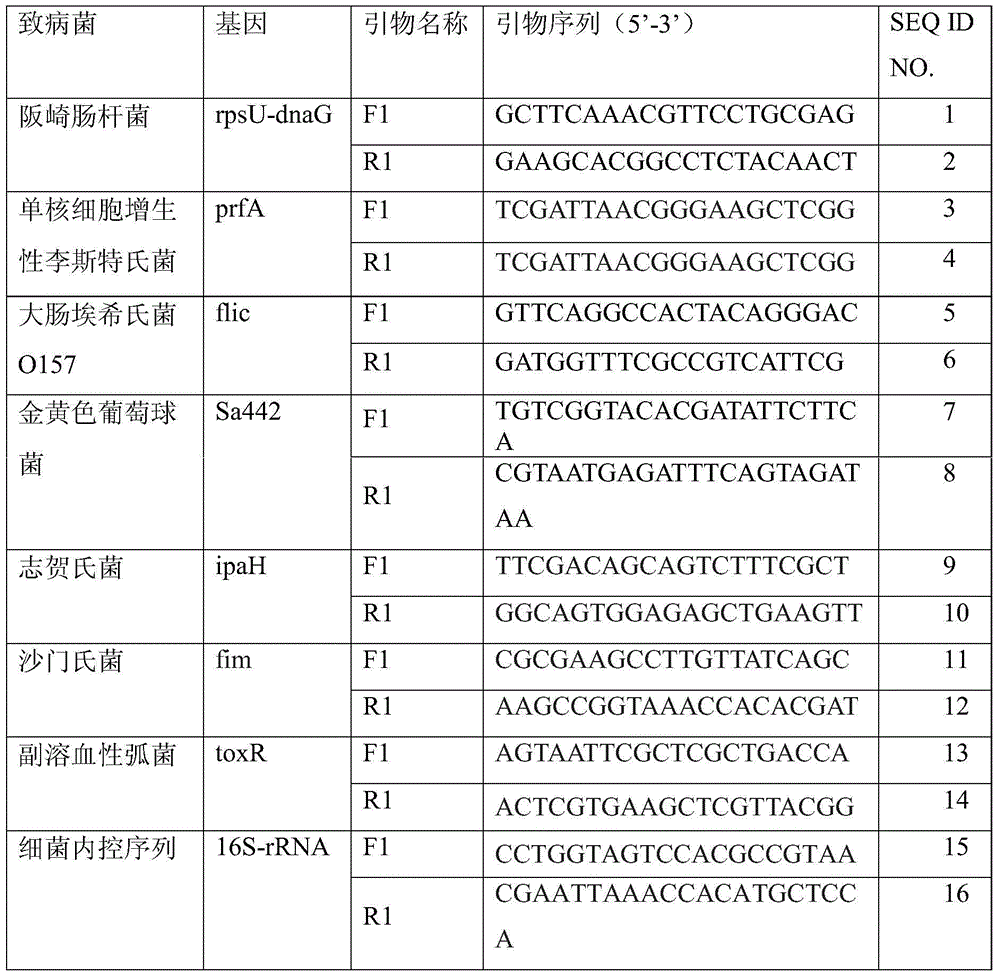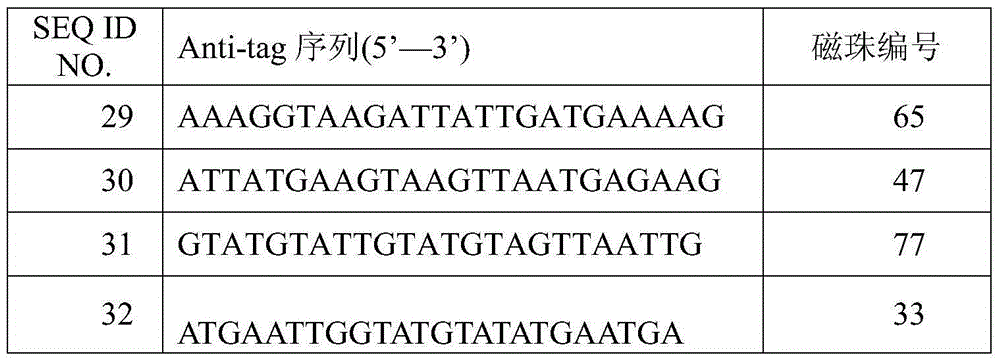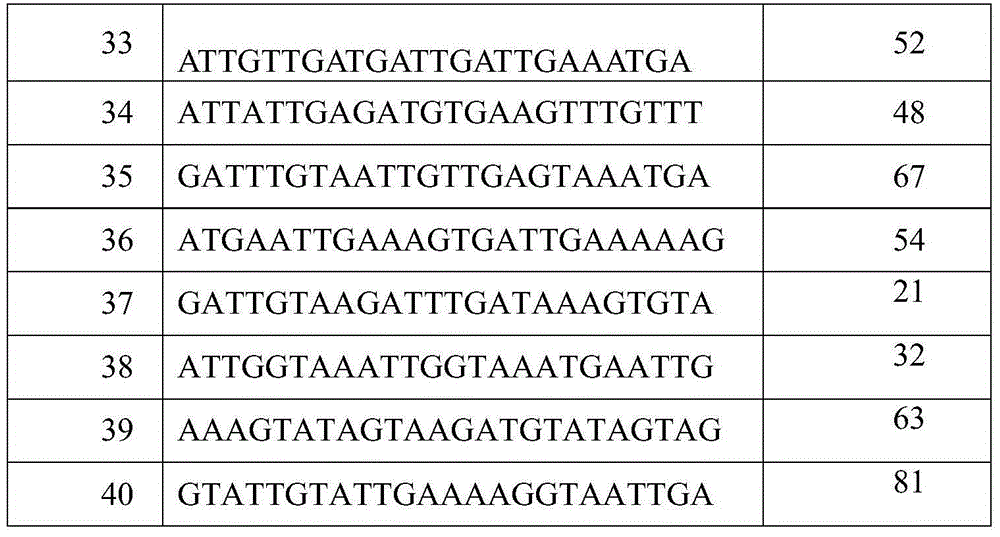Amplification primer for detecting food-borne pathogenic microorganisms and liquid chip kit
A technology of pathogenic microorganisms and amplification primers, applied in the field of molecular biology, can solve the problems of increased sensitivity and complexity of detection methods, and achieve the effects of avoiding uncertain factors, precise and deterministic analysis of characteristics, and improving sensitivity
- Summary
- Abstract
- Description
- Claims
- Application Information
AI Technical Summary
Problems solved by technology
Method used
Image
Examples
Embodiment 1
[0027] The liquid-phase chip kit for detecting food-borne pathogenic microorganisms described in this embodiment mainly includes:
[0028] 1. PCR primers
[0029] For the rpsU-dnaG gene of Enterobacter sakazakii, the prfA gene of Listeria monocytogenes, the flic gene of Escherichia coli O157, the Sa442 gene of Staphylococcus aureus, the ipaH gene of Shigella, The fim gene of Salmonella, the toxR gene of Vibrio parahaemolyticus, and the bacterial internal control sequence 16S-rRNA were respectively designed to amplify primer pairs.
[0030] Among them, the amplification primer F1 is composed of three parts, from the 5' end to the 3' end are: tag sequence, spacer arm, and the forward amplification primer of the corresponding gene. At the same time, the amplification primer R1 is the 5' end with biotin Labeled and corresponding reverse primers of microorganisms to be detected, the primer sequences are shown in the table below:
[0031] Table 1 Genes and amplification primers of...
Embodiment 3
[0100] The detection of the target gene by the liquid phase chip of the amplification primer of embodiment 3 different tag sequences
[0101] 1. Design of liquid phase chip preparation (selection of Tag sequence and Anti-Tag sequence)
[0102] Taking the rpsU-dnaG gene of Enterobacter sakazakii and the prfA gene detection liquid chip of Listeria monocytogenes as examples, the amplification primers were respectively designed for the rpsU-dnaG and prfA genes, and the amplification primers consisted of three Partial composition, the sequence from 5' end to 3' end is: tag sequence + spacer arm + forward amplification primer of the corresponding gene, meanwhile, the 5' end of the reverse amplification primer of amplification primer R1 is labeled with biotin. Wherein, the tag sequences in the amplification primers are respectively selected from SEQ ID NO.17-SEQ ID NO.28, and correspondingly, the anti-tag sequences coated on the magnetic beads that are complementary to the correspond...
Embodiment 4
[0117] Example 4 Detection of Target Genes by Liquid Chips with Different Spacer Arms
[0118] 1. Design of liquid phase chip preparation (selection of spacer arm)
[0119] The amplification primer F1 of the present invention consists of three parts, from the 5' end to the 3' end: a tag sequence, a spacer arm, and a forward amplification primer of the corresponding gene. In the present invention, a section of spacer arm is inserted between the Tag sequence and the forward amplification primer, and the spacer arm can connect two sections of base sequences (tag sequence and amplification primer), but cannot be paired with deoxyribonucleotide bases. During the amplification process, the spacer can prevent the DNA polymerization reaction from proceeding forward, so that the PCR product does not have an anti-tag sequence complementary to the tag sequence, greatly improving the hybridization efficiency and the intensity of the detection signal.
[0120] In this example, taking the ...
PUM
 Login to View More
Login to View More Abstract
Description
Claims
Application Information
 Login to View More
Login to View More - R&D
- Intellectual Property
- Life Sciences
- Materials
- Tech Scout
- Unparalleled Data Quality
- Higher Quality Content
- 60% Fewer Hallucinations
Browse by: Latest US Patents, China's latest patents, Technical Efficacy Thesaurus, Application Domain, Technology Topic, Popular Technical Reports.
© 2025 PatSnap. All rights reserved.Legal|Privacy policy|Modern Slavery Act Transparency Statement|Sitemap|About US| Contact US: help@patsnap.com



